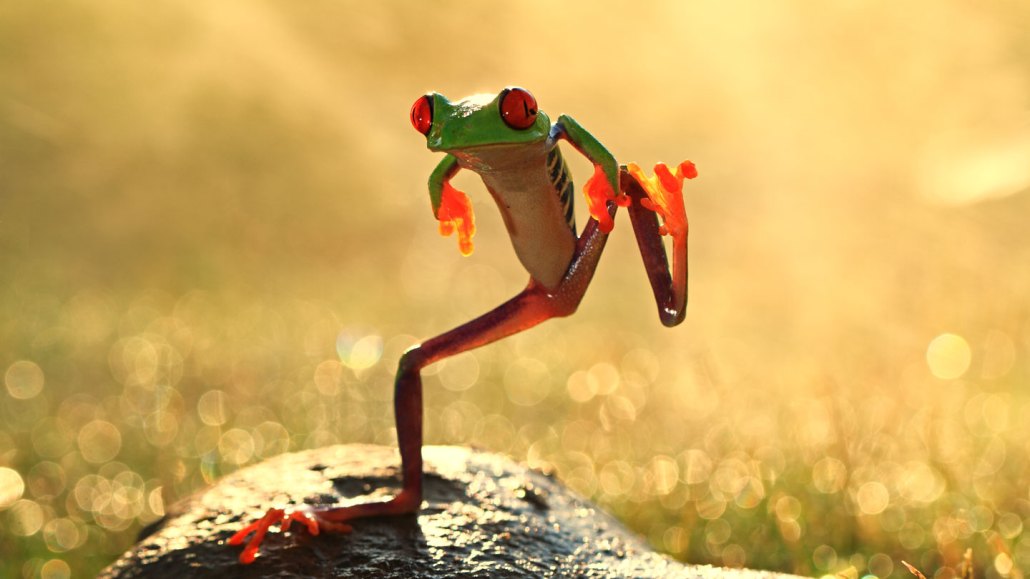Let’s learn about frogs
Frog or toad, these amphibians are fascinating critters

Frogs like this one in Indonesia form a diverse group of thousands of amphibious species.
shikheigoh/Getty Images
Share this:
- Share via email (Opens in new window) Email
- Click to share on Facebook (Opens in new window) Facebook
- Click to share on X (Opens in new window) X
- Click to share on Pinterest (Opens in new window) Pinterest
- Click to share on Reddit (Opens in new window) Reddit
- Share to Google Classroom (Opens in new window) Google Classroom
- Click to print (Opens in new window) Print
April is National Frog Month. And if you’re not already a fan of frogs, you might be thinking: What’s all the fuss? But there’s a lot to admire about these little amphibians.
There are thousands of frog species. They can be found on every continent except Antarctica. Some frogs are called frogs. Other species are known as toads. Toads are frogs that tend to have drier, bumpier skin than other species. They’re also less likely to hang out in or near water.
No matter where they live once an adult, though, frogs typically begin their lives in water. Through metamorphosis, they shapeshift from swimming baby tadpoles to hopping adult frogs. Adult frogs are known for their impressive tongues, which they use to catch their meals. Some frogs can snatch meals as big as mice and tarantulas.
While a few species of frogs, such as the goliath frog or cane toad, can grow to weigh over 1 kilogram (2.2 pounds), many frogs are tiny. And so some have some pretty neat tricks to avoid becoming some other critter’s snack. Congolese toads, for instance, may go undercover as snakes. Others camouflage themselves into their background or dress themselves in bright colors to advertise that they’re toxic if eaten. And still others just hop, hop away. Sure, some frogs are a little derpy, like hopping toadlets that just can’t seem to stick the landing. But that’s part of their charm.
There’s another, far grimmer reason that frogs deserve attention, too. A fungal skin disease is wiping out huge numbers of them. Scientists are studying how some frogs survive the disease to help others from dying out.
Want to know more? We’ve got some stories to get you started:
Pumpkin toadlets can’t hear themselves talk Tiny orange frogs make soft chirping sounds in the forests of Brazil. Their ears, however, cannot hear them, a new study finds. (10/31/2017) Readability: 7.0
Lots of frogs and salamanders have a secret glow A widespread ability to glow in brilliant colors could make amphibians easier to track down in the wild. (4/28/2020) Readability: 7.6
A Bolivian frog species returns from the dead A Bolivian frog was missing in the wild for 10 years. Scientists feared chytrid fungus had driven the frog extinct. Then they found 5 survivors. (2/26/2019) Readability: 7.9
Explore more
Frog’s gift of grab comes from saliva and squishy tissue
Congolese toads may avoid predators by copycatting deadly vipers
Why these jumping toadlets get confused mid-flight
How these poison frogs avoid poisoning themselves
Why some frogs can survive killer fungal disease
Flu fighter found in frog slime
A new drug mix helps frogs regrow amputated legs
Could Wednesday Addams really jolt a frog back to life?
Activities
Want to support amphibian conservation? Join FrogWatch USA. Volunteers in listen for frog and toad calls and add their observations to an online database. These data can help scientists understand the health of amphibian populations across the country.







